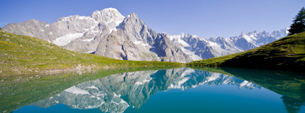Art and culture

Wherever you look you are sure to spot signs of the area's prestigious past, a history that has left significant traces behind. From the cave engravings of Bard to the town's nineteenth-century fort, a range of architectural and military engineering masterpieces have been created here through the ages.
The Consular Road to Gaul, built by the Romans in the 1st century B.C., follows the flow of the Dora Baltea River and a few stretches can still be seen, and indeed walked along; at Donnas, a beautiful arch can be seen, carved out into the rock. The Roman bridge at Pont-Saint-Martin is miraculously still intact, and is one of the most interesting surviving single-span bridges, while in Saint-Vincent and Châtillon only the remains are just visible.
More traces still have survived from the Middle Ages, and the castles in particular create a fascinating journey back in time, from the ancient strongholds of Cly at Saint-Denis and Chenal and Saint-Germain in Montjovet, of which only a few fragments of the original structure survive, to the splendidly attractive residence of Issogne, the incredible fortress of Verrès and the original architecture of the castle of Ussel in Châtillon.
The bell towers of the parish churches look over every hamlet in the area; particularly interesting are the Romanesque churches of Arnad and Saint-Vincent.
The more recent history of the area is testified to by Bard and its Fort, rebuilt in 1830 by the Savoia royal family, now fully renovated back to its original splendour. The Fort currently houses the Alps Museum.










